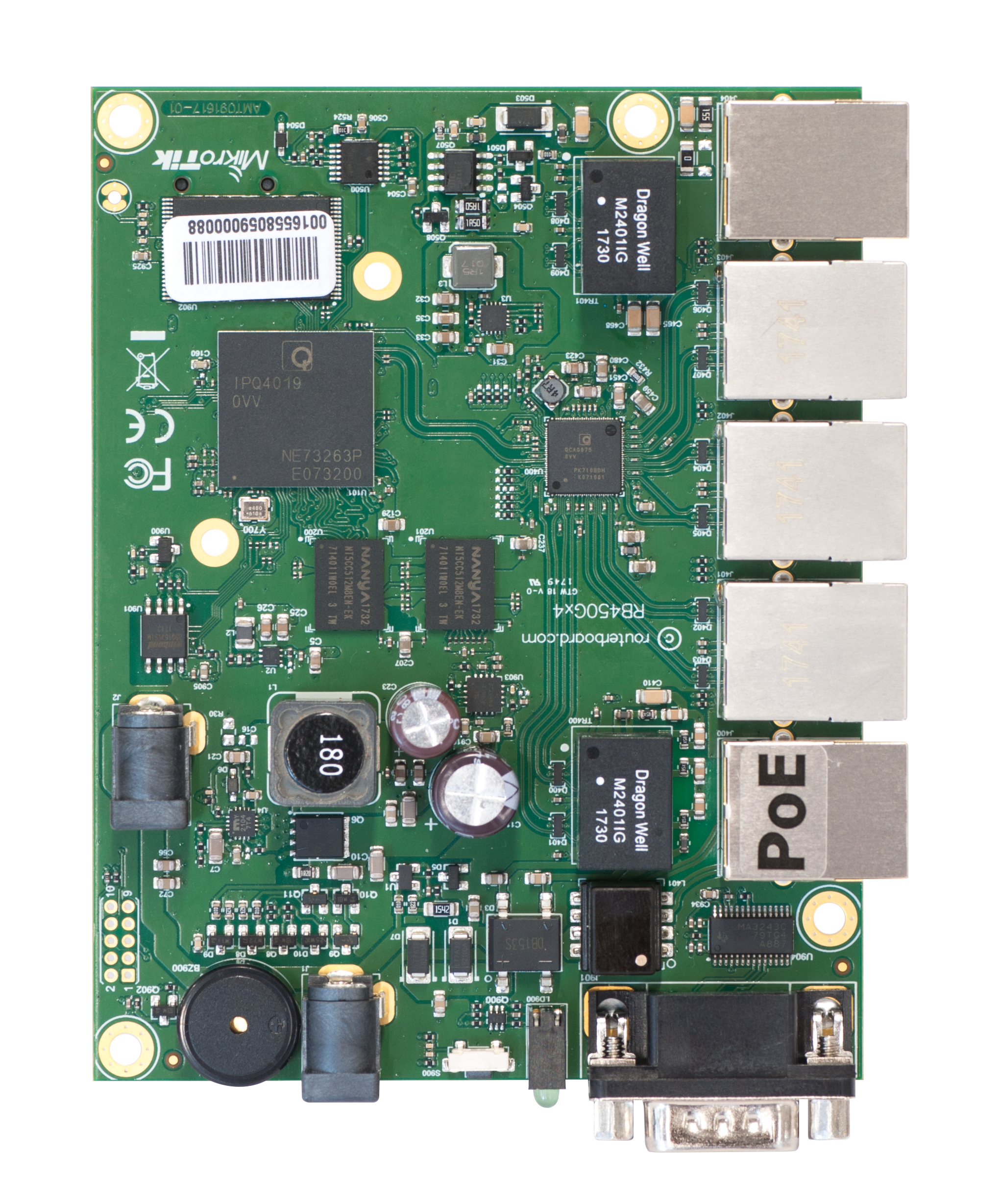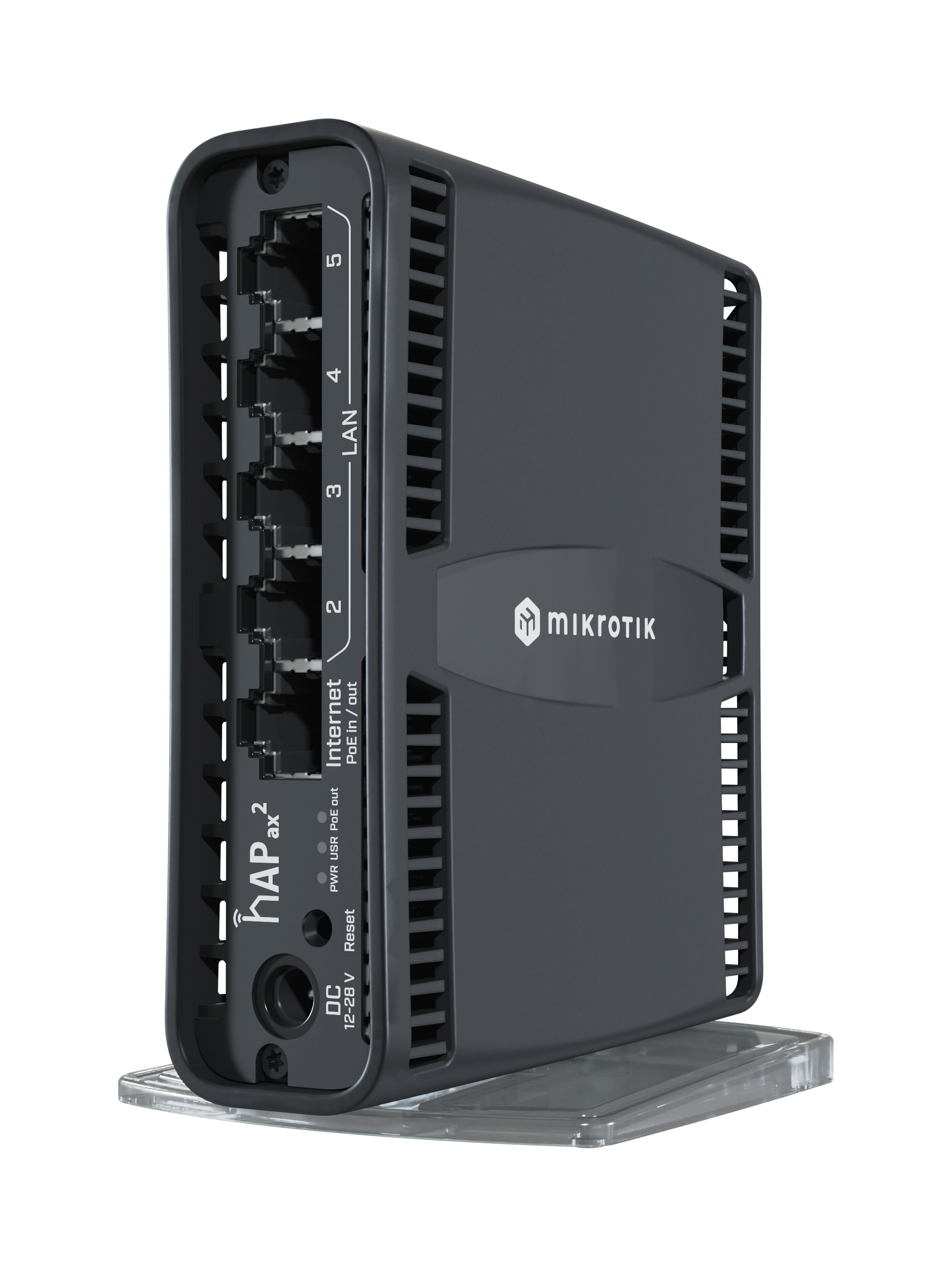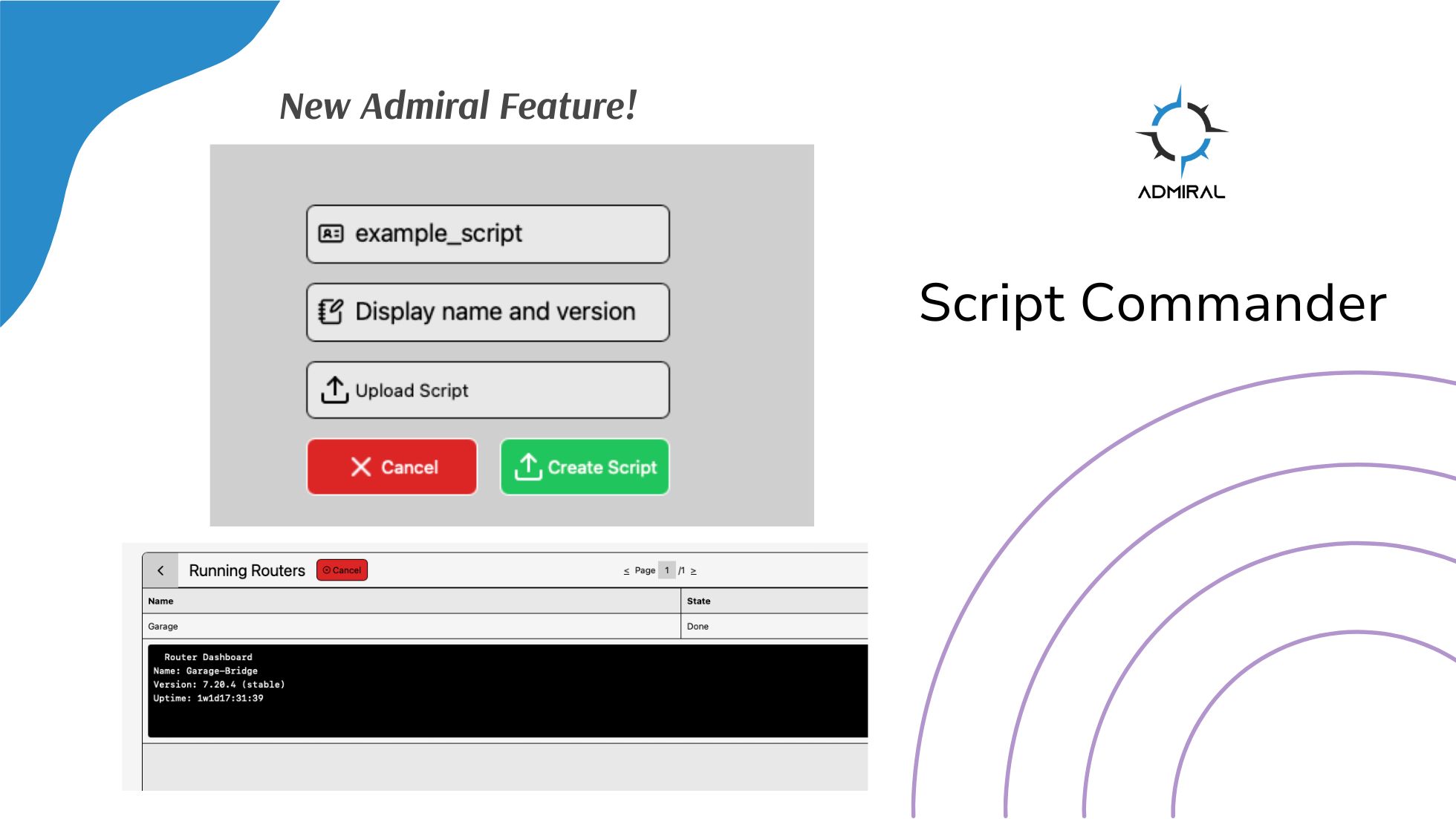Script Commander, is a new feature on Admiral Platform designed to give you better control…

How I fell in love with MikroTik
Our first meeting
A long time ago, in a galaxy (er, state) far, far away, I’d never heard of this thing called MikroTik. The year was 2007 and I was a Cisco certified network engineer poring over forums trying to solve some kind of thing or another when I cam across mention of an RB1100 being used as a VPN concentrator in a pinch when a PIX firewall went bad and needed replacing. Color me intrigued.

During my research, I discovered that I could buy about ten RB1100s for the price of one Cisco PIX, so it was pretty easy to convince my department head to purchase one and an RB450G to just do some lab testing with. They arrived and I immediately downloaded Winbox and logged in to see a pretty cool and intuitive GUI. Then things got busy and those Tiks got relegated to the back of my desk in the pile “extra stuff” that collects dust, where they sat for about a year.

A trip down memory lane
I was working side by side with several other network engineers to rolll-out multicast IPTV, and there were no shortages of issues to work through. If you’ve never worked with multicast, I’d argue that it’s the most intensive protocol I’ve seen for capacity and stress testing your network for optmized and smooth operation. Unicast traffic, and in particular TCP traffic is light years easier – multicast will haunt your dreams and give you nightmares with everything from vendor interop to Quality of Service (QoS) to congestion to backplane pressure, CPU and memory resources and the list goes on and on. At least, that was the scenario and environment back in the first decade of the new millenia.
We had so many problems deploying IPTV that every single vendor had bugs and we couldn’t tell which thing was broken in which way to engage support. Enter my second MikroTik experience. I remembered that while I had been clicking through that router GUI, I’d seen something about IGMP and PIM and remembered that there had been a fairly robust logging facility, so I dusted it off for a second look.
Lo and behold, the MikroTik enabled us to turn on IGMP and PIM logging with both local and remote syslog. MikroTik became our go to device for verifying proper protocol support for various multicast packets, and in particular flags. It was an instrumental tool and mechanism for troubleshooting that led to a successful roll out of multicast IPTV to our customers.
From that point on, I saw that MikroTik is truly an inexpensive swiss army knife.
What else have I done with Tiks?
Since then, I’ve done all kinds of things with MikroTiks. To name a few: I’ve packet captured both locally and remotely. I’ve debugged loads of problems using multiple Winbox tabs to simultaneously show different router facilities. I’ve interoperated MikroTik OSPF, MPLS and BGP with Cisco and Brocade. I’ve managed tens of thousands of Tiks with VPN concentrators for centralized visibility and control. I was part of a team that created a managed WiFi dashboard that paired with MikroTik routers called Aerēz. I’ve used traffic engineering and Quality of Service to enhance user experience. I’ve helped cobble together both temporary workarounds and permanent fixtures for scalable networks to deliver broadband, voice, video, layer 2 and layer 3 VPN.
In short – MikroTik has been there for me in a vast variety of use cases – and hands down, you can’t beat the bang for the buck. I can’t wait to see what’s next!




